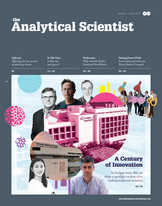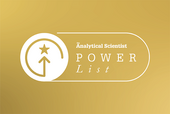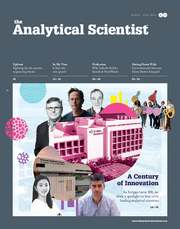LC Sommelier
Sitting Down With… André de Villiers, Professor of Chemistry and Polymer Science, Stellenbosch University, Stellenbosch, South Africa
Jessica Allerton | | 6 min read | Interview

Did you always want to be a scientist?
To be frank, I was never sure about what direction I wanted to take. In fact, I planned on becoming a veterinarian after university. However, after a rather momentous discussion with Pat Sandra and Henk Lauer in my fourth year, I decided to take separation science as a postgraduate. And I’ve never looked back.
What sparked your interest in chromatography?
As I delved into separation science, I became particularly interested in wine chemistry. After discussions with wine researchers at Stellenbosch, the importance of analytical chemistry in this area was evident. I was very fortunate to complete both my MSc and PhD degrees under the supervision of Pat Sandra, who introduced me to experts across the chromatography field. To this day, I continue to work with these scientists, focusing my research on wine phenolic chemistry, improved separation, and characterization of tannins. The complexity of wine tannins make it an ideal application for testing the performance of the liquid chromatography (LC) and 2D-LC-MS methods my research group develops.
What’s the most significant change or development in separation science that you have seen during your career?
One noteworthy development that precedes my introduction to the field is capillary electrophoresis (CE), which became the focus of my MSc degree. Despite this, there are two developments in particular that stand out: ultra high pressure liquid chromatography (UHPLC) and multidimensional LC. I was fortunate enough to be involved in HPLC research as a postdoc fellow at Pfizer Analytical Research Centre (PARC) just as commercial UHPLC instrumentation was introduced. Today, this technology is commonly used, and I think the paradigm-shift we’ve seen in performance as a result isn’t appreciated enough – neither are some of the lessons learned surrounding extra-column dispersion and frictional heating. Even today, many of our LC-MS methods don’t optimally exploit the available chromatographic performance due to instrumental constraints.
Additionally, despite being developed many years ago, multidimensional LC has rapidly developed over the past 20 years – specifically in terms of fundamental concepts, instrumentation, methodologies, and applications. I was also first introduced to multidimensional LC during my time at PARC – and, since 2006, 2D-LC has been a main focus of my research groups activities.
I must also mention the rapid advancements in MS technology and hyphenated chromatography-MS methods. These standout developments have provided us with more robust, flexible, faster, sensitive, and higher-resolving MS detection systems for high-resolution chromatography – allowing us to investigate compositions of complex samples in much more detail. Moreover, ion mobility spectrometry (IMS) has added additional value to LC-MS workflows. With data analysis becoming even more essential and progressively more complex within the chromatographic protocol, these advancements have been crucial in allowing us to extract relevant information.
What is the biggest challenge facing the field today?
The training of suitably qualified chromatographers. Though chromatography is used extensively in research and industrial environments, it’s often in the context of an “analytical tool” and so relatively few users of advanced chromatography and mass spec systems are experts. Much of this can be overcome by on-the-job training, but the increasing complexity of our technology requires genuine expertise to extract optimal performance. I believe that too few highly experienced PhD and postdoc fellows are trained in chromatography. Maybe because the field isn’t considered “sexy enough” compared with other avenues.
The Analytical Scientist Presents:
Enjoying yourself? There's plenty more where that came from! Our weekly Mass Spec Newsletter brings you the most popular stories as they unfold, chosen by our fantastic Editorial team!
In 2019, you spoke about multidimensional 2D-LC stepping into the spotlight – were your predictions correct in the short term?
Fortunately, yes! This is evidenced by the number of 2D-LC contributions at the HPLC conference series over the past few years. It’s also gratifying to see that the quality of experimental results and the application scope have noticeably increased over this period.
We can see further evidence of the growing use of 2D-LC in literature; indeed, a recent review article (1) highlights the growing application of multi-dimensional liquid chromatography (MD-LC) in industry (1) – an important development indicative of the maturation of 2D-LC.
I see this trend continuing in the near future, primarily in terms of growing numbers of applications. At present, good quality commercial instrumentation is available with capabilities of a range of different operational modes. Additionally, much of the fundamental groundwork has been laid, making it easier for new users to enter the field. The complexity of instrumentation, method development, and data analysis are hindrances to more widespread use of this technique – and that’s something a number of groups are currently focusing their research on.
In 2020, you predicted that HPLC instrumentation 20 years from now will have moved on from the current modular design to accommodate more efficient column formats. How are we progressing?
Whether instrument design fundamentally changes in the foreseeable future remains to be seen. However, the concerns regarding extra-column dispersion have arguably become more relevant today. As Gert Desmet and Ken Broeckhoven stated in 2019 (2): “The current state-of-the-art chromatographic columns have become too good compared to the quality of most instruments,” and “It is also very difficult to eliminate the effect of extra-column band broadening from our instruments without sacrificing in S/N-ratio or make a radical change to the current modular ‘hi-fi tower’ design adopted by all instrument manufacturers.” Ultimately, this limits development of further high-performance column formats.
Extra-column dispersion also represents an important constraint on the performance of comprehensive 2D-LC separations – especially when hyphenated to MS. It is currently common practice to use high flow rates in the second dimension to reduce cycle times. However, these flows require splitting prior to MS detection, which has a drastic detrimental impact on peak profiles (3). It is no surprise that LCxLC-UV contour plots are almost exclusively reported in literature; too much separation performance is sacrificed with MS detection, albeit that MS is the most important detector for LCxLC separations.
What are you currently working on?
Our work currently focuses on the use of MS – particularly with cyclic IMS (cIMS) – in combination with one and two-dimensional LC for complex natural product analysis. The emphasis in MD-LC is on developing tools for improved method development and data analysis. All of this is tied to particular applications, such as analysis of tannins, cannabis, and South African plants.
What are your hopes for the future?
I’d like our field to receive more recognition as an independent research area. Often chromatography in particular is taught at undergraduate level primarily from the aspect of an analytical tool, which doesn’t reflect the exciting research and career opportunities within the field.
What advice do you have for the next generation of analytical scientists?
Pay attention to your data – not just from the perspective of the planned publication, but also for what can be learnt from the data. Often, “failed” experiments are the most interesting and can lead to further exciting research avenues. They can certainly contribute to our understanding of the tools we use. Apart from this, be curious, work hard, and make the best of the opportunities that come your way.
- RS Hurk et al., Science Direct, 166, 117166 (2023). DOI: 10.1016/j.trac.2023.117166.
- G Desmet, K Broeckhoven, Science Direct, 119, 115619 (2019). DOI: 10.1016/j.trac.2019.115619.
- C Gunnarson et al., Science Direct, 1639, 461893 (2021). DOI: 10.1016/j.chroma.2021.461893.
Associate Editor, The Analytical Scientist

















